
tjones
-
Posts
40 -
Joined
-
Last visited
Content Type
Profiles
Forums
Blogs
Gallery
Events
Store
Posts posted by tjones
-
-
There are no set prices - a lot depends on the details if it has been engraved. You can find bargains in out of the way places -
but a good and historical tipstaff can sell for 1000 pounds ($1600) up-wards. When I did my book we could only find just
over 2000 still in existance - and that included all British Museums. A few more have surfaced over the years, but they are in small
numbers. Should you start collecting , be careful. Many are repainted or repaired. Try to send me a picture first. Mervyn
Did you see the tipstaff that was knocked down for €1600 a few days ago on estimate of €100 - €150? If you click on the picture you can make the picture larger and then use the "zoom in" button to make it larger still. The engraving merits a close inspection.
0 -
These brass topped tipstaffs are brilliant, how dear are they?
0 -
Looks like ' SVI' ? Crown is for William 4th - 1830-37.
Maybe its Suffolk Volunteer Infantry? Haven't a clue Im afraid...
0 -
Fellow collectors, have you ever seen this SBP or can help identify it? The crown looks very early and of course WR for William. V probably for volunteer, but thats all I can surmise. I checked Parkyn's book but no success and am hoping smarter people here may know. Apologies for blurry photo it is all I have and many thanks.
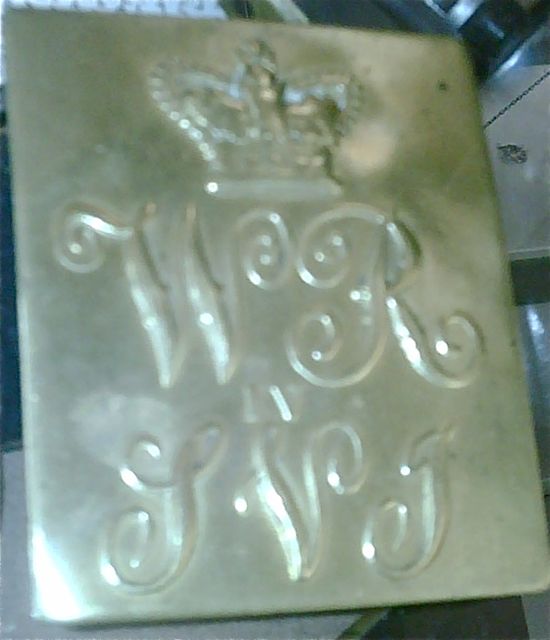 0
0 -
Firstly, the material is pewter - so, no bullion value. However, it is for King George 4th - wo died in 1830. 184 years
of history makes this a rare item. I would think 500 pounds ($800) - posibly more to a serious collector. Mervyn
As much as that? Same price as a good tipstaff then. Cheers
0 -
tjones. Thankyou for posting this picture. I think it is either one I sold from my collection - or, a similar piece. This is not
a Commissioner's Token. Rather it is a badge of office for a Constable of the Forfarshire Constabulary. It really takes the
place of a tipstaff. The constable would have worn it on a silk ribbon around his neck.
Somewhere, further back on this sub-forum, is an article I wrote. The Royal Cypher is for King George 4th 1820-1830. Mervyn
Thanks Mervyn. Thats really interesting to know and looks to be a rare badge. What would you estimate the cost of such a badge if one could find it? Cheers Tom
0 -
Possibly a catalogue picture from the recent auction of Scottish regalia ?
I haven't been able to find out. But I did find another interesting token, this one from Forfar and GR4. You can see a picture of it posted to the british online police museum here:
http://www.pmcc-club.co.uk/museum/displayimage.php?album=400&pos=0
Looks to be a really interesting token with great age, does anyone have any background information on it or has seen this one before? I venture a guess Mr. Mitton will know about it and can enlighten us.
0 -
Possibly, I'm not sure. I can try to find out.
0 -
Sorry, I don't have the information (it's not my badge). I was just told about it and was sent the picture.
0 -
Yes, the disc has the name engraved on back of the chap who carried it along with his title. The badge is Scottish hallmarked silver to the 1940s. Quite a nice thing.
0 -
Here is a picture of a provincial Scottish silver badge. I wish more badges were around to be collected. They are very scarce.
 0
0 -
Interesting truncheon. I wouldn't have bought it based upon its overall look. I don't recall Victorian truncheons ever looking like this. Sorry also to say the coat of arms looks to be a transfer decal to me (especially in the way some areas are chipped off). Glad to hear you are returning this piece. Don't let this put you off collecting painted truncheons as really most out there are original.
0 -
Here are two very "interesting" tipstaffs up on the block at Christies. Maybe our resident experts would like to help us understand these two?
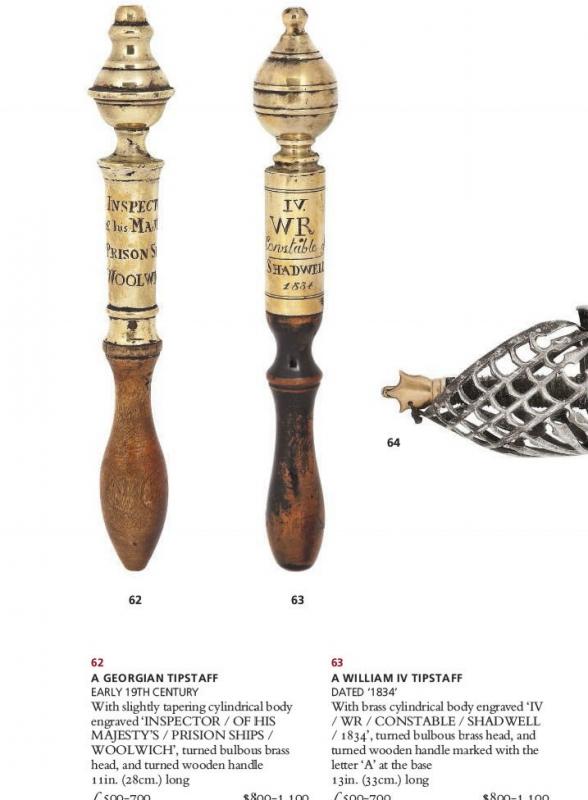

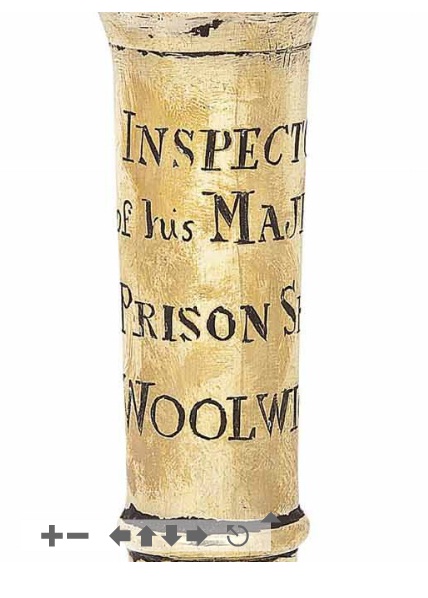 0
0 -
Cheers Mervyn. Its certainly possible for the colour of the fabric to have gone off in 200 years. However I have seen in the past few years the green colour and do believe it is of some significance. Maybe one day we will find out. An interesting one was just knocked down on Ebay it was a standard Parker Field except marked for Sir Peter Tait & Co, Southwark St. London, a haberdashery of sorts, which is unusual.
0 -
I hope Mervyn will jump in here, however until he does, he has told me that the colour is usually red and sometimes dark purple. Unless this actually symbolizes something out of the ordinary (Irish Constabulary perhaps?) I would say someone repaced the missing material with whatever was at hand. I replaced the missing velvet on a tipstaff of the same style as yours with red after consulting Mervyn, so I know people will do this to complete an artifact.
Regards
Brian
Cheers mate. Yes, I know that 99.9 percent of specimens will have red velvet, but now after having actually seen two or three with green, I am wondering perhaps the green has any special meaning as you said perhaps Irish, or perhaps something else. I am sure someone will know.
0 -
does anyone know what is the significance of a green coloured fabric in the crown of a tipstaff? ...i have always noted red or crimson coloured fabric and only twice seen green colour.... see attached photos for a green colored fabric which is curious....
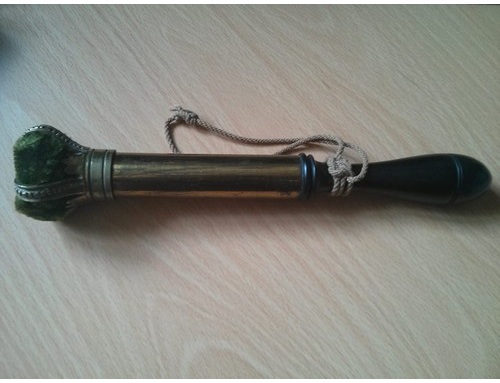
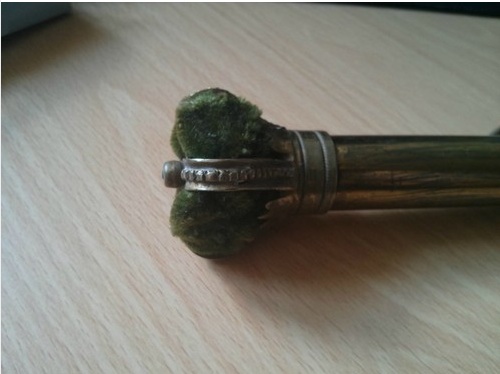 0
0 -
Thanks very much for having a look at it. It's true the patina is not what I have seen in the past. Also the casting on one of them is a bit more crude than I have seen in the past. Very hard to tell with some of these pieces. I shall hold back on this pair. Cheers
From looking at the photos they appear to be OK - perhaps a coat of varnish to protect them has caused the loss of any patination.
Tennant's are a reputable Auctioneers - your first enquiry should be with them for their opinion. If there is time, do this in writing so that
you have a record of their opinion. Also, read their Conditions of Sale - this will give their policy on items that prove not to be genuine. Mervyn
0 -
Hello Gents (and ladies)!
I recently wandered upon two interesting shoulder belt plates coming up for auction in a provincial UK auction rooms and I am interested in them, but there is something about the way they look that makes me feel uncomfortable about bidding (patina, wear, not sure what). I'm not at all experienced with badges and so was wondering if other more experienced members could let me have their opinion of these belt plates? All opinions welcomed. Because I assume the plate images are copyrighted, I provide Internet links below.
One belt plate is reportedly Victorian to the 18th Foot:
http://www.tennants.co.uk/Catalogue/Lots/186512.aspx
The second plate is other ranks, to the Seaforth Highlanders:
http://www.tennants.co.uk/Catalogue/Lots/186537.aspx
Cheers,
Tjones
0 -
-------------------------------------------------http://gmic.co.uk/uploads/monthly_07_2012/post-6209-0-54000200-1342543018.jpgclick to enlarge---------------------------------------
This picture shows three Staffs of Office.
Top : Carried by Ushers of the Duke of Norfolk - Heriditary Grand Marshall of England - in Westminster
Abbey at the Coronation of King Edward 7th. 1902.
MIDDLE : Official Staff of Office - King William 4th. (1830-37) There are name details.
LOWER : This is an official staff for one of the three Scottish orders of High Constables. Edinburgh, Perth
and Leith. This one is for Perth. Held in Processions - or, on duty - the Royal Arms are at top and those of
Perth at the base. Societies of High Constables were civilian and usually well-to-do shopkeepers - or,
gentlemen. They were formed in the days when Policing was very poor.
when do you intend to sell the staffs of office? how much would they be?
0 -
My old man has just got his hands on a lovely Victorian Silver medal hanger and buckle to adorn a French Crimea medal which is being re-ribboned.
Now at some time of its life the hanger and buckle have been badly gilded with gold. This is tarnished and worn in places, and would look much beter in just the silver finish.
So, to this end, other than taking them to a jeweller to have it buffed off, how can he remove the gilding? (The reason he doesnt want to have it buffed off is that the hanger and buckle both have a lovely floral design, and he doesnt want to loose any of the detail.)
All the best
Dan
Does anyone have an answer to Dan's question about safely removing gilding from gilded objects? I have a badly deteriorating badge that I'm dying to remove the gilding on it... Cheers
0 -
Hi Mervyn......
I have checked my book...... "MILITARY SHOULDER BELT PLATES AND BUTTONS bu Major H. G. Parkyn OBE, Published 1956 by Gale and Polden"..... But the problem is it only goes up to 1885 I thought it went on later......
I checked my K and K and the crown on the badge is the Victorian Crown as used on the cap badge......
This got me thinking and so I started checking some old auction catalogues..... I found it in one cataloguge with a full white metal badge and called Victorian...... In another with a Bi-metal badge it was called George V......
There are other units that still keep the Victorian style crowns on some of their badges even after the end of the reign......
Maybe it would be good to post on the British Badge forum and they could tell for certain......
Mike
Thanks. In case other members are interested in using the shapes of the various crowns to date badges, there is a good discussion with colour photos here:
http://www.diggerhis...adges-index.htm
There are four crowns that appear with regularity: the Imperial (State) crown of 1837, the Tudor crown, the Imperial (State) crown of 1937, and St. Edwards crown.
0 -
Thank you to Mervyn and Mike for contributing an opinion as to the age of this belt plate.
Mike, I would be grateful if you could identify in your book on belt plates and offer a conclusive opinion? (perhaps a photo?) Also, which book is that? (I should probably buy it)
Much obliged to you both for helping
0 -
-
Friends - I also posted this in the identifications corner, but I know that not all members go there so I'll put the question here as well, if you don't mind.
Do you think the cross belt plate in the photo is late Victorian? In other words, do you think it's over 100 years old? It looks to me to be that old, but I am not terribly knowledgeable about the subject.
All opinions accepted with many thanks!
0


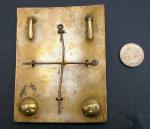

Truncheons and things that sting a bit
in Great Britain: Mervyn Mitton's British & Colonial Police Forces
Posted
A lot of these tipstaves seem to sell at auction in one year, and then come back in a new sale a year or two later, and then another year later, come up again for sale. Hard to believe collectors are getting tired of their bits so quickly and selling them off. I have to wonder whether theres some profiteering at work here.